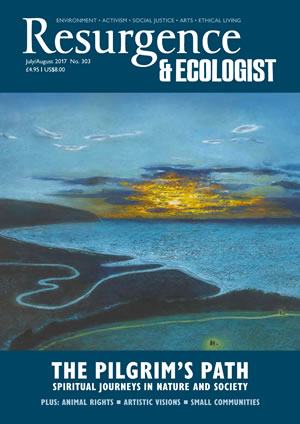Should a book be a thing of beauty? Should the medium engage us, as much as the message? In the past that has certainly been the case, especially with medieval illuminated manuscripts such as the Books of Hours, those devotional collections of prayers and psalms that, when produced for wealthy patrons, could take miniature illustration to undreamed-of heights: the most famous, the Très Riches Heures of the Duke of Berry, presents a pictorial account of the 15th-century French countryside in colours of scarcely credible brilliance.
In recent years we have reached the other, austere extreme with the arrival of the e-reader, offering text and nothing but – no striking cover, no comforting weight, not even the pleasing smell of a book, particularly a second-hand one. And it has not triumphed: our bookshops are still full of tomes, not electronic files, and there are still publishers who seek to make their books objects of beauty. Most notably in this regard, we have Thames & Hudson, one of the world’s leading publishing houses for illustrated books on art, architecture and design, who have now turned their attention to ornithology.
Remarkable Birds catches the eye at once, for the cover (the cover itself, there being no dustwrapper) is entirely taken up with a famous and arresting image from perhaps the greatest of all bird artists, John James Audubon – the white pelican, from his Birds of America of 1837 – and the pages that follow are filled with more than 200 sumptuously coloured illustrations by Audubon and other famous bird painters of the past such as John Gould and Archibald Thorburn.
You will look in vain for anything by modern British bird artists such as Robert Gillmor, Carry Akroyd or Keith Shackleton – the most recent image I could pick out was Charles Tunnicliffe’s lovely painting of cliff-top puffins dating from 1953 – but what is there is pleasing to a degree. I was particularly entranced by a moody, haunting vision of rooks rebuilding their nests in spring by the Russian 19th-century landscape artist Alexander Savrasov, and by the bold-faced osprey of his British contemporary Prideaux John Selby.
The point is that the pictures are the point: this is a book intended first and foremost to be looked at. Yet Remarkable Birds goes beyond the coffee-table genre and is given a substantial further dimension by the text, from leading ornithologist and conservationist Mark Avery. It is Avery who has selected the 67 “remarkables”, which include, as you might expect, such treasures as hummingbirds and birds of paradise, but also more intriguing characters such as the secretary bird, the resplendent quetzal, the cock-of-the-rock and the Chatham Island black robin, all of which have stories to tell, which Avery relates with panache.
Befitting his great experience – he was a longtime Conservation Director of the RSPB – Avery is an informed and engaging guide, and he does not only offer new insights on the individual species. Not the least entertaining part of the book is his Introduction, an essay that might be subtitled ‘Birds and Why We Like ’Em’, a sort of beginner’s guide to the whole avian phenomenon, suitable for a visitor from outer space. (Typical point: “Birds are creatures of sight and sound, as are we, whereas most of our fellow mammals’ sensations are dominated by smell and touch.”) It all makes for a most attractive production, a blend of medium and message as fascinating as it is lovely to look at.







